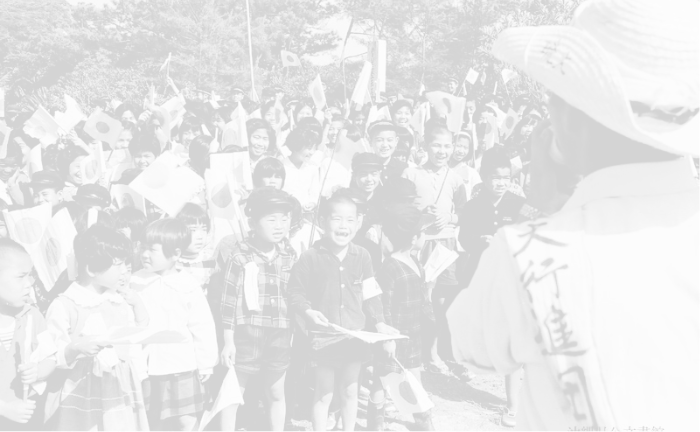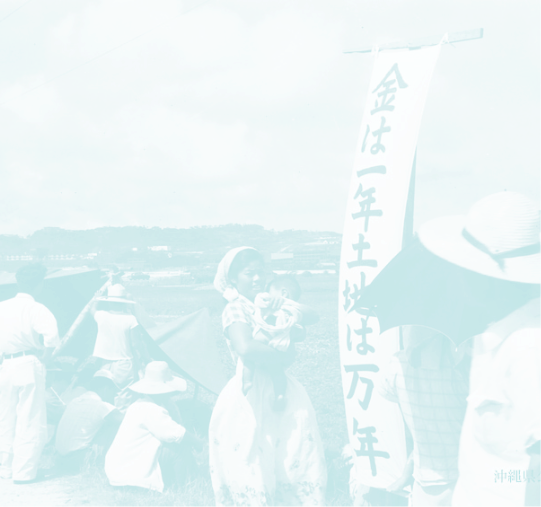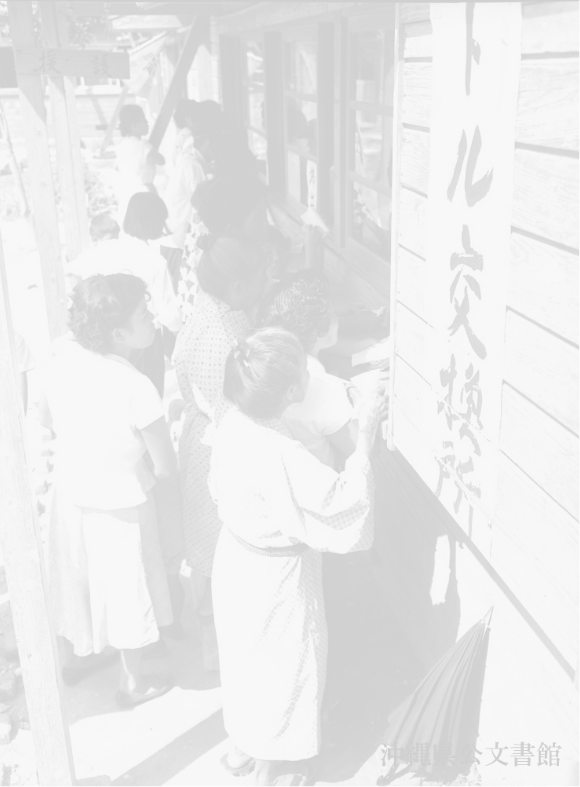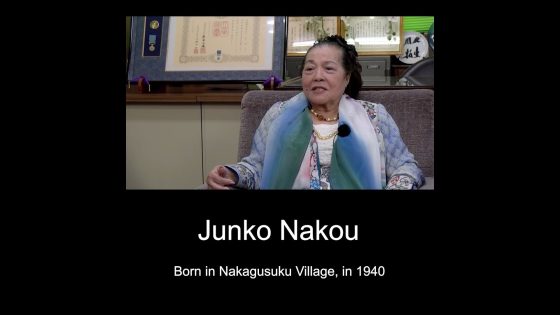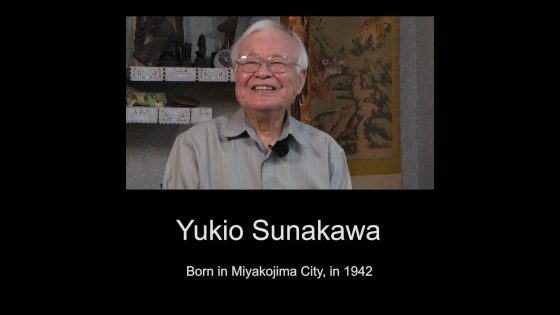
Ryukyuan Cuisine is the Treasure of Okinawa
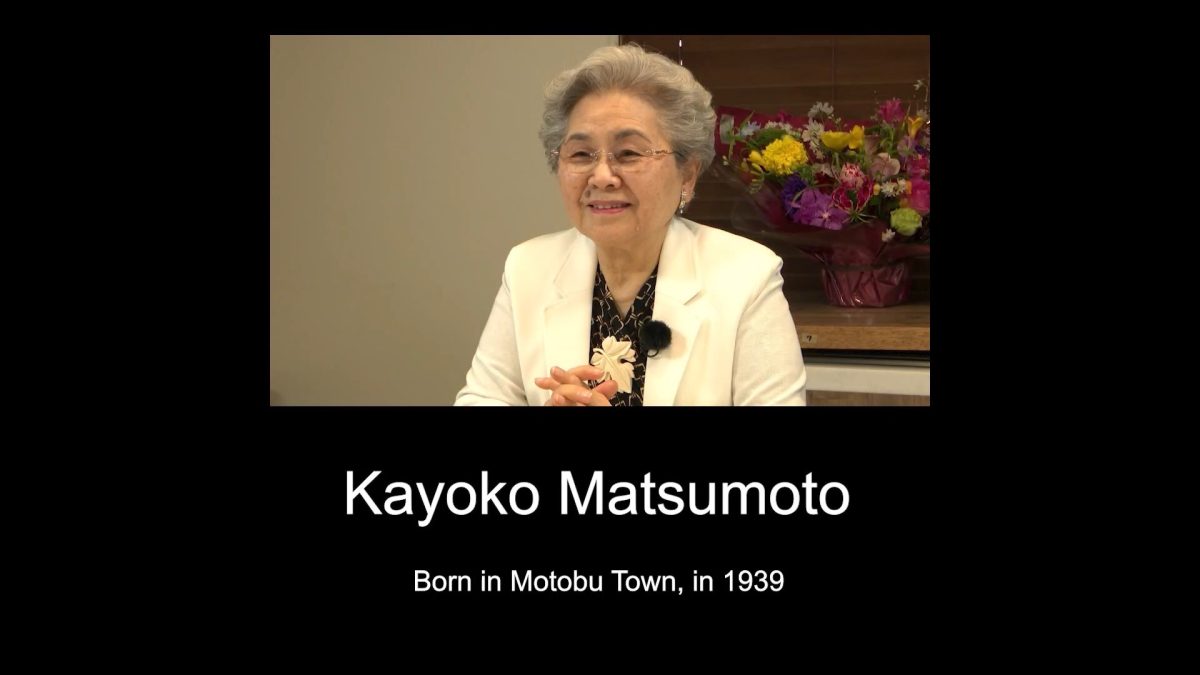

- Born in 1939
- Kayoko Matsumoto
Timeline
| 1939 |
Born in the Philippines where her family lived as agricultural migrants.
|
|
|---|---|---|
| 1945 |
His family evacuated to the jungle from Davao, Philippines, at the end of the war.
|
|
|
Returned to Kajiki, Kagoshima Prefecture in November, and stayed in Oita Prefecture until August of the following year.
|
||
| 1946 |
Returned to his father's hometown, Motobu Town, to live with her family.
|
|
| 1949 |
Moved to Naha with his family when she was in the fifth grade of elementary school. Tasted inamuduchi for the first time at a friend's jusan celebration and was impressed by its deliciousness.
|
|
| 1960 |
Graduated from Sagami Women's Junior College, Department of Home Economics.
|
|
| 1961 |
Studied at the teachers' course of the International Cooking School in Tokyo and became a certified cooking teacher.
|
|
| 1962 |
Opened Koza Culinary Institute in Goya, Koza City (now Goya, Okinawa City) with his seniors.
|
|
| 1969 |
Opened Matsumoto Culinary Institute in Naha City, teaching Ryukyuan cuisine and various other cuisines.
|
|
| 2019 |
Ryukyuan Cuisine Preservation Association was established.
|
Story
Brief biography of the witness
She is the president of the Matsumoto Culinary Institute and also the vice president of the Ryukyuan Cuisine Preservation Association. She is a culinary researcher who preserves and shares traditional Okinawan cuisine and is dedicated to helping people improve their mental and physical health through Ryukyuan cuisine. Received many awards, including the Okinawa Prefecture Cultural Merit Award (Art: Cuisine), and has been a lecturer for the Okinawa Prefecture "Ryukyu Cuisine Traditions Successor/ Ryukyu Cuisine Leader Training Course" project since 2017.
Life in the Philippines and postwar repatriation
Life in the Philippines
I was born in the Philippines and grew up in Motobu. Before the war, my parents had a very difficult time making a living because they had no farmland in Okinawa, so they emigrated to the Philippines. They started by clearing farmland and made a living by cultivating hemp in Davao, Philippines. At that time, I was only about 5 or 6 years old, but I remember a little about my surroundings, such as the shape of my house. There were a lot of fruit trees planted around the house where I lived at the time. The biggest one was an avocado tree. There was something like a wire strung around it. We had a pig. There were cacao and coffee trees at the back. I think they made Okinawa cuisine normally, but what I remember was frying bananas. In my mind I can still remember frying with oil. I will never forget the taste. I remember it being slightly sour and very delicious. Tomatoes were often added to various dishes, such as stews and soups. During the war, there was a Japanese signal corps in the house we lived in at first. That’s why we got a lot of information. I think our family was ready to evacuate from there at any time. That's why I even memorized the sound of Morse code. I heard that sound every day. One evening we all moved to the jungle. Different from the jungle we moved to, everyone else was going to Tamugan. It seems that the people who went there were doing it tough. We brought food, and there were almost, well, no casualties among those who followed my father.
Return to Okinawa, Japan
When I came to Japan, I think we landed in Kagoshima. From there, we went to Oita and were given assistance at a temple. It was Usa District in Oita. I lived there until I was in the first grade of elementary school, then I came back to Okinawa and entered the second grade of elementary school in Okinawa.
Postwar life and the city of Naha
Moved to Naha to Earn a Living
I came back to Okinawa and came to Motobu. When we came back, Okinawa was a burnt-out area. So in the end there was no food. There were no fields anymore. Originally, we went to the Philippines without anything. There was only a small field called Ataiguwa (kitchen garden.)We couldn't grow enough food to eat so we decided to go to the city, and we moved to Naha.
Postwar Town of Naha
My parents were in business. Kainan, which was down from Sobe was located on Shinei Street, and down from Shinei Street was called "Uimachiguwa" in our dialect. As you go down the road from Uimachiguwa (the upper market), there are stores above the Gabu river. My parents were doing business there. My father made and sold shoes, and my mother sold fruit. At first, it was rice, but in the end she sold fruit. If you went a little further from there, you would find Shintenchi Market. After passing Shintenchi Market, there was a place called “Shichamachiguwa” and it sold almost nothing but food. This is the current public market. That was Shichamachiguwa (the lower market). There were not only people from Naha but also people from the suburbs such as Haebaru and Itoman. Everyone who came from far away got off the bus at Kainan and went down from Uimachiguwa to Shichamachigwa and did some shopping. That's why the annual Uimishichibi event was always crowded with people. Business was carried out in a small space. Even so, they were able to do business but there were also people who were not able to do so. That's what business was all about. Some people put socks in Mijoki (rounded winnowing baskets) and did street selling. That was how it was then. Many people came to Machiguwa from various regions and remote islands. Everyone made a living doing business there. In fact, when I was little, there was no food. Okinawa was under American rule, so there were canned foods, but we hardly ever ate delicious meals at home. When I lived in Yanbaru, if someone slaughtered a pig, we would receive a share of it. We received a share from my uncle and aunt.
A taste of unforgettable memories
First Time Eating Inamuduchi
When I was in fifth grade, I moved from Yanbaru (Motobu Town) to Naha. Around that time, there was Jusan Yue (the 13th Celebration). At the time of the celebration, I was invited to a Jusan Yue feast by my friend. Well, I was very surprised at the feast. There I ate inamuduchi (wild boar soup) for the first time in my life. There was no inamuduchi in Yanbaru. I didn't even know the name. It contained a lot of ingredients such as Kamaboko (fish cake), pork, shiitake mushrooms and konnyaku jelly. Inamuduchi has a rich taste and it is made with white miso. I ate it and I’ll never forget the taste.
Student Life in Tokyo
At that time, we were under American rule, so things like coffee, cocoa, chocolate, etc., were plentiful and cheap in Okinawa. If you took it to the mainland, it was considered an imported product and was very expensive. If you didn't sell it, you wouldn't make money. If we took it to Okachimachi in Tokyo and sold it, the price had gone up a lot just because it was an imported item. I sold it there and used it for living expenses. I paid for my school tuition by selling watches. Omega was more popular than Rolex at the time. If I bought a watch to sell, I could pay my monthly fees for half a year.
Learning about the Differences in Food Culture
I think the most obvious one was miso soup. If you were from Okinawa, it would be miso soup with just a few ingredients, which was called nnashiru (soup without ingredients). Instead, there were various types of side dishes, but eating natto was the most awful. Back then, it smelled so bad to me. It didn't have a lot of things in it, so I ate it mostly with just soy sauce. We couldn't add eggs. There were quite a few vegetables that I had never eaten before. When I was a student, I had the most trouble when I was on duty for doing the shopping. When I had to buy ingredients, I didn't know the name of the vegetables or where to buy them. There were many vegetables that I had never seen before. For many, it was their first time eating or tasting them.
Cooking instruction as a nutritionist
Working as a Certified Dietitian
At first, I was planning to become a dietitian after getting certified as a dietitian. At that time, it was the Ryukyu government, so I went to register for a license. When I went to register for my license, I was told that I didn't have to register. When I heard that, I thought it would be difficult to find a job. I had qualified as a dietitian. So, I thought about what I could do to make use of this, and I came up with cooking. So I decided to start cooking. At that time, the students taking the course were much older than me, in their 50s or so. They were people who had a calm life, but they wanted to learn proper Ryukyu cuisine again, or to make and eat proper dishes. At that time, I was still in my 20s and had just graduated, so I was a little hesitant. Once I had done it for a while and calmed down a bit, I went to Tokyo again. I obtained qualifications as a cooking instructor and made use of my qualifications as a dietitian, and I returned to Okinawa. After that, I started thinking about what I could do. When giving teaching cooking, I also made use of my dietitian’s knowledge. I was teaching people how to cook using nutrition and cooking science. While cooking, I also talked about nutrition when I had time. For example, while boiling spinach, teaching about why we boil spinach. We need to boil it so we can remove the scum and then use it. Even when cooking, I gave instructions in this way.
Cooking School in Koza and American Food Culture
In Goya (now Okinawa City), I opened a cooking school together with a senior dietitian from Naha Commercial High School in Okinawa City. When we were holding the classes, some of the students were wives of second-generation Japanese-Americans and wives of military personnel, as the area is all around the base. So, there were a lot of frozen foods and canned foods, so I sometimes went to people's homes to see if there was something I could do to help them make use of them. I heard that their children did not eat much. In such households, most of the food was canned food and frozen food. There weren't that many ready-made packaged foods yet. Frozen or canned foods were common. It seemed like they were eating their meals using such foods. There were many households where Okinawan people worked as maids. The maids were also African-American, and they were very good at cooking. Of course, Okinawan maids could also cook, but African-Americans were definitely better at it. At that time, we were not allowed to enter the PX (Post Exchange store on base), but military personnel and other people connected to the base would take us there, or buy us groceries if we asked. That's how we got American-made food. Hors d'oeuvres were popular at that time. Hors d'oeuvres were often made when celebrating if it was a party. That's why I think the word hors d'oeuvres still exists today. Among the things that were influenced by American culture at the time, pork was also called A loin (back loin) and B loin (shoulder loin). I think the names A-loin and B-loin are only used in Okinawa. When it comes to lunch, it is also called A, B, and C lunch. Even now, those names are being revived. I think the influences around that time (being under the US administration) were huge. Restaurants with the A sign (officially recognized by the US military) were really delicious. It wasn't a place we could go often.
Okinawa's Treasure: Thoughts on Ryukyuan Cuisine
Thoughts on Ryukyuan Cuisine
I've gradually become more partial to Ryukyu cuisine. I have always been particular about Ryukyu cuisine. For example, anyone can make something like Tashiya (stir-fried noodles or vegetables), and you can make it with any ingredients. Ordinary vegetables such as Unche (water spinach) or any other vegetables would work. You can also use Handama (Okinawan spinach) or cabbage. The dish that is quickly stir-fried is called Tashiya, but the best is Champuru. Champuru includes grilled tofu. Combining tofu and seasonal vegetables. It's quick and economical and you can make it with any ingredients you have available. That's why I want to encourage people to take advantage of the strengths of Ryukyu cuisine. The number of people who can no longer make it has increased, and now people are turning away from Ryukyu cuisine. I have to bring it back somehow. There are long-established Ryukyu cuisine restaurants, and there are also restaurants that only serve imperial court-style cuisine, but I don't go there to eat because I don't understand the value of them. I think I'll go eat it once I understand its value. That's why I want to cherish those things and the long-established stores. There are still around 200 known recipes out of the hundreds that there have been. One by one, little by little, so that they don't become obsolete, I'm trying to spread the word somehow. I believe that using Okinawan ingredients and Okinawan cooking methods is important. Using local products and eating them using local cooking methods is the kindest thing for our bodies. However, Okinawa is a tourist prefecture. We now have to find ways to feed authentic Ryukyu cuisine to not only ourselves, but also to tourists.
The Characteristics of Ryukyuan Cuisine
One characteristic of Ryukyu Cuisine is dashi (stock). The feature dishes is using dashi. It may be pork dashi or bonito dashi, but it’s important to make the stock more concentrated. Make it concentrated and use it with bonito dashi and pork dashi. When it comes to combining several stocks, on the mainland, we combine kelp and bonito. Glutamic acid and inosinic acid become combined, but in Okinawa, inosinic acid is combined with another stock of inosinic acid, but it is quite rich and delicious. And when we stir-fry, we use lard (pork fat). We often use pork fat. And there are many dishes where the flavor from meat is transferred to the vegetables. That's why it becomes Ajikuta (a rich taste). You can eat vegetables very deliciously because it has become Ajikuta. Dashi is the basis of Ryukyu cuisine. So Ajikuta is not just about having a strong taste. It is a rich taste, including many different flavors and a mixture of multiple tastes. And you hope it turns out to be Ajikuta
Food Situation in Okinawa
The food situation in Okinawa is very bad right now. So the average lifespan of people is not good either. Men are ranked 43rd. Women have also dropped to 16th place (as of 2020). Actually, the reason for this drop is that people are not very interested in food, and the amount of vegetables they eat has decreased significantly. As a result, we are near the bottom nationally. We need to eat more vegetables. I understand that meat is more popular now, but I think they eat too much of it. You shouldn't eat too much fat and salt, and it's increasing too much. I think we need to focus on consuming a well-balanced diet and keeping consumption low of things we need to. So, including that, somehow I'm wondering if Okinawa can go back to its original state so that we can once again use the term "Prefecture of Longevity. “I think if we eat local food properly, it will return to that state soon. It should be something that you can easily make yourself. It is very important to experience it. In particular, we remember the taste of food by eating it. You won't know until you eat it, so you should eat and learn with your body. I want you to have an experience like that. I want you to eat delicious, proper food. If you eat food from a good place or if your family cooks for you, that's how you learn to taste it. That's why you should remember the taste there, and you can pass on the taste to others. The most important thing is the taste. Even if you look at a recipe without knowing the taste, the taste often doesn't turn out like it should. There are still many good ingredients in Okinawa. Pork comes first, then tofu and island tofu. It's delicious, isn't it? There's island tofu and there's seaweed. Kelp comes from Hokkaido, and there are a lot of different kinds of seaweed around us, such as Mozuku, Asa, and Tsunomata. We can harvest a lot of seaweed. I want to use all of these things including island vegetables and eat them every meal of every day. Making your own food tastes better and it is easier to control. People who don't want to consume a lot of oil can avoid it, and there are many types of oil available now, so you can choose from them. You can easily adjust the amount of salt by reducing or increasing it. I want people to make things by themselves, even if it is something easy to make. If they do that, everything will go into their bodies as it is, so I think it will be easier to adjust.
Food and Events in Okinawa
Nowadays, event dishes and event meals are becoming a little simpler. But it is important to make them every time for events. Sanguachiguwashi (a March confectionery) can be made for the Hamauri event (March 3rd of the lunar year). Making Amagashi (Okinawa-style bean jam) can be made for the Gunguwachigunichi event. It doesn't matter if it's just one thing, when we make event food, we can make a start and expand what we can do, and be able to make event food. Nowadays, many children seem to avoid eating juzume cuisine (food packed in lacquer boxes). I think the easiest way to understand it and to eat it is finding a creative way to enhance it. For example, you can add seasoned meat to soba noodles, so it is arranged in a new way. I think more people can learn about it if it is event food. However, I think children also want to eat Western food like pasta. That's OK. Ryukyu cuisine has things that are similar to that, like Somin putturu (Somen noodle dish.) If you add a little bit of the boiled Somen water to the Somen, you can make something similar to pasta. Ryukyu cuisine is now being incorporated into school lunches, so I think it will continue to spread from there. The children remember the names of the dishes. Also, dialects are disappearing, and almost all the names of dishes are dialects, so I think it would be nice if we could keep the dialects as well. I think it would be good if we could think about this as a problem for Okinawa as a whole.
Okinawa's Treasure: Ryukyuan Cuisine
Delicious food is very valuable, isn't it? Ryukyu cuisine is a treasure in Okinawa. In that sense, I would like to preserve Ryukyu cuisine. If everyone makes it every day, it will remain in the culture. It will become a dying art when people stop making it. I hope we can all keep it in good shape so that it doesn't get lost or become obsolete. Let's all eat it together. Let’s make delicious dishes. Everyone makes the same face when it's delicious, and they look happy. Everyone looks happy when they think the taste is delicious. I want to see that moment of relief when anyone, no matter what they're doing, is eating something delicious, no matter the situation. It makes me feel better when I think something is delicious too. That's why I want to experience seeing other people feeling better too by watching that. Watching that never gets boring!
RELATED
Involvement in Social Education Activities in Miyako after the War
- Born in 1942
- Yukio Sunakawa
